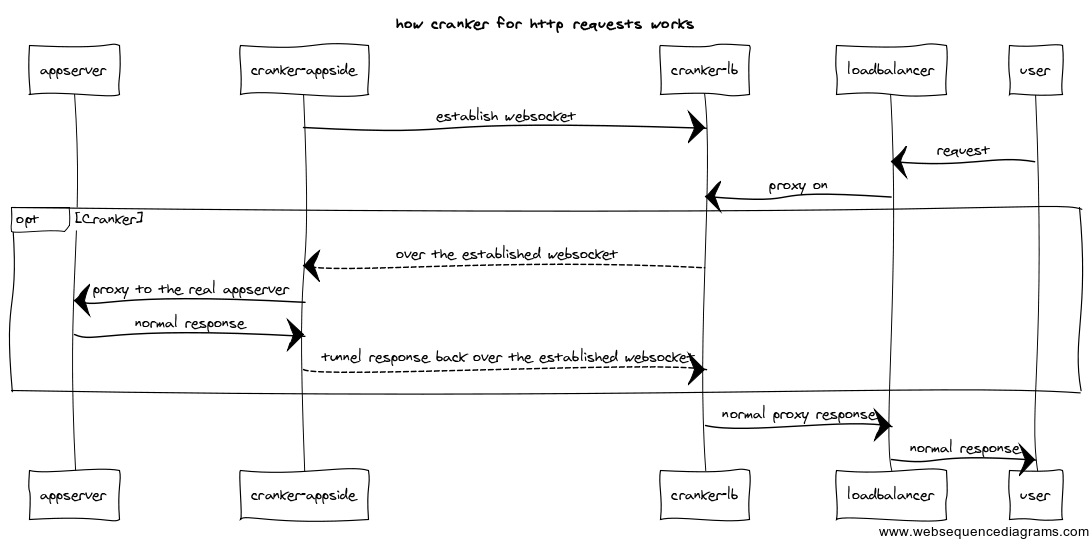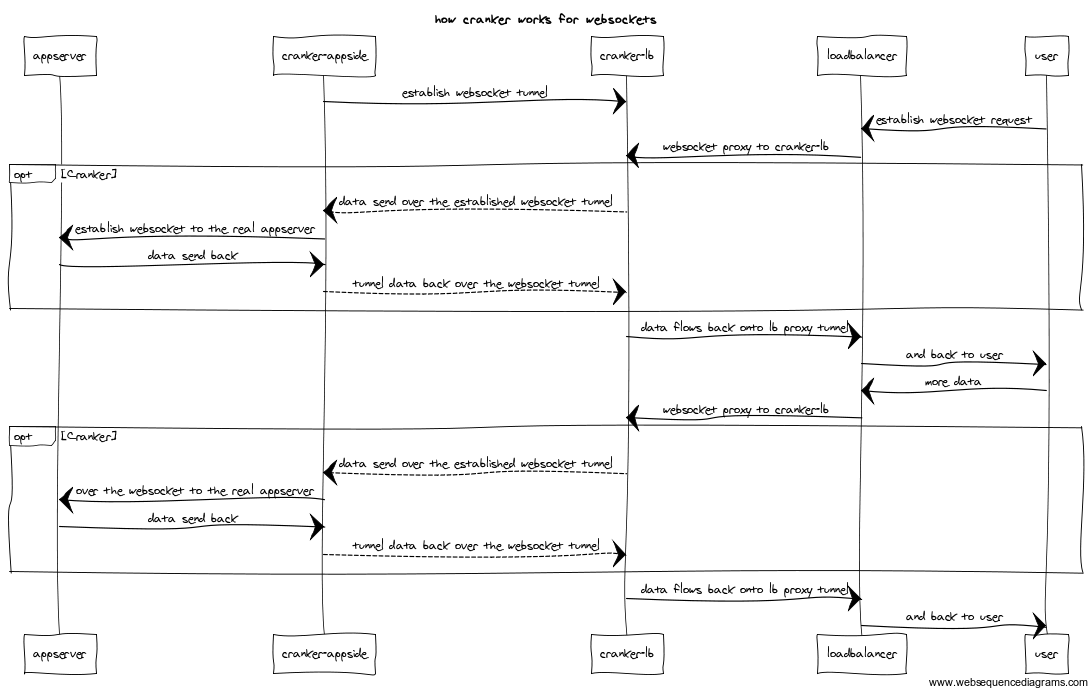Avoid orchestration by reversing the polairty of your infrastructure.
- websockets over websockets
- seems like we need some framing
- but the client websocket could be tied to a cranker websocket
- ability to use one cranker-lb for multiple services
- when approx connects to lb have it send some service identification
- and then cranker lb should keep a websocket pool per-service id
- load balancers could send traffic to that with http headers or paths
- if it was a header then the approx could use the same header
- when approx makes the websocket send X-Service-Id: my-service
- configure the loadbalancer to send to cranker-ln with X-Service-Id: my-service
- weights
- have cranker approx connect to multiple cranker lbs
- but associate them with a weight
- so if cranker approx knows lb xxx is in another datacenter it can cost it more
- the cost is sent with the approx websocket creation
- so now cranker lb knows what cost to apply
- need to test sending a bunch of data
- the load balancer side and the app server side need to start independently
- we need to be able to turn the test mode on
- and select the mode: test, loadbal or appserver
- the app server side needs to wait
- implement HTTP proxying better
- adding proxy header in correct circumstances
We have both ends of cranker coded
- lb-server and cranker-server implement the load balancer end
- start-lb starts both the servers
- both servers need an address but default to
- 8000 - cranker-server (websockets)
- 8001 - load balancer proxy
- cranker-connector implements the app server side
- it needs the app-server address ...
- ... and the address of the cranker server
- we have a test mode that:
- sets up a fake appserv on 8003
- sets up cranker-connector from the appserv to a load balancer
- fires a request at the load balancer
- shows that the request comes back via the fake appserv
HTTP requests with cranker:
- a single cranker/a runs near your load balancer, where it can have a fixed address
- it listens to 2 sockets, x and y
- receives connections from the load balancer on x
- receives websocket connections from cranker/b on y
- these will arrive in lumps
- when a cranker-connector starts it tries to connect a lot of sockets
- cranker/b runs near your app server
- makes websockets to cranker/a
- what comes over the websocket is encoded HTTP requests from the load balancer
- proxy the request to the app server
- return the response encoded over the websocket
Websockets with cranker:
Download from http://example.com/FIXME.
FIXME: explanation
$ java -jar cranker-0.1.0-standalone.jar [args]
...
...
Copyright © 2015 FIXME
Distributed under the Eclipse Public License either version 1.0 or (at your option) any later version.

